The modern western and how we got here
With Django Unchained currently in theaters, gaining critical acclaim and financial success, the usual Hollywood talk about the ‘rebirth of the western’ starts floating around. Sorry, but I don’t think that is very likely. To me, ‘rebirth’ assumes that Westerns died and people actually want them back. Westerns never really seemed to go away but rather they have been in a period of flux. Recently, we have seen a range of new ‘Western’ style movies that combine comedy (Rango), martial arts (Bunraku) and Sci-fi (Cowboys & Aliens). Today’s Western is a far cry from its humble beginnings. However, these versions and new takes on the genre are not all that new but rather a bending of the very flexible concept called the Western.
The early years: The silent cowboys learn to talk

Westerns were an early hit in the silent era of films and included many great classic films. One example is The Great Train Robbery, often considered to be the first Western film. Those first Westerns were silent films that relied on action and over-exaggeration to tell their story. Plots were basic and simple to follow and generally built around chase and action scenes.
The introduction of sound nearly killed the western. Many stars of the early cowboy films failed to make the jump to talkies, as did many stars of other film genres. Those that did (Broncho Billy Anderson, Tom Mix etc.) made major films mixed in with many low budget serials. It was the serials that did the damage. The low budgets and cheap final product hurt the long term popularity of the western. Another issue was the fact that there were still REAL heroes and outlaws alive during this time (Wyatt Earp was a paid consultant for many early western films) which made for much over-romanticism of the stories. It would seem we can thank that trend for much of the surviving folklore of the old west.
They won’t shut up: The singing cowboys
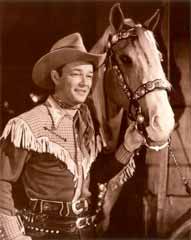
As talkies became the norm and studios felt the need to fill movies with noise just because they could, along came the singing cowboy. The movie musical had not yet reached its current, more recognizable form when the first of the singing cowboys started making films. The singing cowboy was an outgrowth of genuine cowboy culture combined with the realities of all pre-mass media entertainment (i.e. entertain thyself). Before TV and Radio or even the phonograph was a part of everyone’s home, people told stories and sang to entertain one another. A far greater percentage of people back then could play an instrument or sing as it was a part of everyday life. So it was only natural these western heroes would sing for the camera.
Movie cowboys like Gene Autry, Tex Ritter, Roy Rogers (pictured) and his wife Dale Evans are the best known from the era, having been huge stars that made many films. This period was a hit with moviegoers initially when sound was still something of a novelty but it didn’t take very long for most of the stars to fade away, leaving only the best of the bunch to be remembered. Once TV became widely available, Roy Rogers and Gene Autry brought the singing cowboy genre into our homes. It was to be the last hurrah though for the singing Western as musicals of the big brassy style and the dancers like Gene Kelly and Fred Astaire began to enchant movie audiences. The singing cowboy became trite and all but faded away.
One of the most interesting stars of the singing cowboy period was John Wayne. Yep, that John Wayne. Wayne made several singing cowboy films, the only problem was that he couldn’t sing, so all the signing was dubbed by the son of the director. These were the films that made Wayne a star but he was quick to dump the singing part of his cowboy image, and soon became a part of American culture…
Tall in the saddle: John Wayne, Gary Cooper and the ‘man’s man’ cowboy
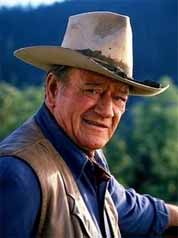
Once John Wayne made the jump from singing to regular cowboy, the genre began to shift to a new kind of leading man. Previously the leading men were a little on the scruffy side or were dandy-ish. This new cowboy as realized by Wayne and Gary Cooper, was rugged and quiet, a man of few words whose word would be his bond. Many actors of the day made westerns in this mold; Jimmy Stewart made the classic The Man Who Shot Liberty Valance, while others like Jimmy Cagney, Henry Fonda and Errol Flynn made films with their own take on the new western hero.
Unfortunately the trend toward something a little more realistic in the leading men did not carry over into the films themselves. Truly great and truly awful films were a product of their times and had to be deliberately lightened in tone or have musical moments in them since Hollywood felt it had to throw everything into a film. This had the effect of derailing otherwise perfectly good drama to send in the clowns. Every few minutes you could count on the rousing hoedown music and a fun fist fight to break any dramatic tension that the film had managed to create. It wasn’t until Wayne’s last few films that he returned to a more dramatic style in keeping with the grittier film making of the 1970’s. Which won him an Oscar for his performance in True Grit. His final film, The Shootist, was something of an epitaph for the current breed of western.
At the time it seemed that it was Wayne himself that may have started the decline of the western in the 1960’s. His personal life, as those of many artists, was turbulent and controversial. He was a staunch conservative (by today’s standards, not so much, but back then he was pretty hard right), and he often made statements in public that are hard to reconcile today. The now-infamous Playboy interview was laced with statements typical of the casual and condescending racism of the day. Most people who knew him claim he was definitely NOT a racist and much of what he has been reported to have said was poorly expressed at best. His words seemed tinged with a great deal of anger at the world around him. His dislike of violence and vulgarity in films made him some enemies in the Hollywood power structure and by the time of his death in 1979, Wayne and the western had fallen out of favor. Wayne is regarded as a film treasure today and in hindsight it is unlikely that he had any real effect on the decline of the genre. It is far more likely the short attention span of the American movie audience that is to blame.
Maureen O’Hara: The only leading lady you will ever need
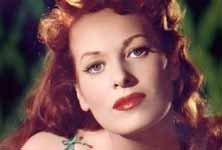 Already a screen star when she did her first western, it didn’t take very long for Maureen O’Hara to cement herself as the perfect Western leading lady. Ms. O’Hara starred in over 50 films and only a few of those were Westerns, but what Westerns they were! She starred with John Wayne in three Westerns and two non-westerns. Rio Grande (1950), The Quiet Man (1952), The Wings of Eagles (1957), McLintock! (1963) and Big Jake (1971) were all collaborations that defined their careers for many movie fans. Once she first appeared with John Wayne in Rio Grande, she was embraced as THE Western heroine. While known for many other films and genres (her classics include How Green Was My Valley, Miracle on 34th Street and the more modern Only the Lonely) her portrayal of the classic western woman became the model for many of the characters that came after her.
Already a screen star when she did her first western, it didn’t take very long for Maureen O’Hara to cement herself as the perfect Western leading lady. Ms. O’Hara starred in over 50 films and only a few of those were Westerns, but what Westerns they were! She starred with John Wayne in three Westerns and two non-westerns. Rio Grande (1950), The Quiet Man (1952), The Wings of Eagles (1957), McLintock! (1963) and Big Jake (1971) were all collaborations that defined their careers for many movie fans. Once she first appeared with John Wayne in Rio Grande, she was embraced as THE Western heroine. While known for many other films and genres (her classics include How Green Was My Valley, Miracle on 34th Street and the more modern Only the Lonely) her portrayal of the classic western woman became the model for many of the characters that came after her.
What made Maureen O’Hara the perfect leading lady and an excellent romantic foil in westerns in particular was her steely look and unflappable feminine attitude. While having to bend to the sexist conventions of the day, she was still a strong female role model and a powerful screen presence. Sometimes that strength came off as bitchy, but that really was the era or dialog rather than the character or performance. Back then strong was often synonymous with bitch (not that this has changed all that much in movies today) but a deep strength of character was what set O’Hara’s characters apart from the rest of the pack. She was in many ways, the female John Wayne; tough, independent and direct. Her word was law and she had the sheer force of will to back it up. She mastered the icy stare-down on film and could intimidate almost anyone with a look when her blood was up. The original ‘fiery redhead’ is now retired and has become the absolute model of how to be a class act living a quiet life after a very public career. If I could have married anyone in history besides my wife, it would have been Ms. O’Hara.
Television: the simultaneous rise and fall
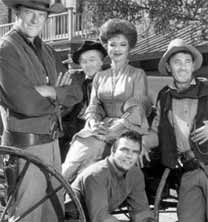 As television grew in popularity the movie industry began to suffer. Many people decided that they could just stay home with the family and watch TV rather than go out for an expensive night at the movies. Following the audience, the Western, along with most other genres, began appearing on the small screen. Unfortunately, the Western genre was heavily watered down to make it ‘safe’ for all audiences. All TV programs in the early days of the medium were as sanitized as they could possibly be to conform to the standards and practices (TV speak for morality police) of the day. The result of this censorship was very good family programming sometimes and unwatchable drivel in others. The quality of Westerns suffered greatly because of this need for family-friendly entertainment. The hard men and rough lives were there but once again tinged with the comedic lightness and foolish sitcom-like plots. Even strong Western television like Have Gun, Will Travel and Gunsmoke were not exempt from the candy coating of the ‘swell’ 1950’s. Westerns on TV were as big as they had ever been on film but the quality of the product was in jeopardy.
As television grew in popularity the movie industry began to suffer. Many people decided that they could just stay home with the family and watch TV rather than go out for an expensive night at the movies. Following the audience, the Western, along with most other genres, began appearing on the small screen. Unfortunately, the Western genre was heavily watered down to make it ‘safe’ for all audiences. All TV programs in the early days of the medium were as sanitized as they could possibly be to conform to the standards and practices (TV speak for morality police) of the day. The result of this censorship was very good family programming sometimes and unwatchable drivel in others. The quality of Westerns suffered greatly because of this need for family-friendly entertainment. The hard men and rough lives were there but once again tinged with the comedic lightness and foolish sitcom-like plots. Even strong Western television like Have Gun, Will Travel and Gunsmoke were not exempt from the candy coating of the ‘swell’ 1950’s. Westerns on TV were as big as they had ever been on film but the quality of the product was in jeopardy.
The plus side of the television Western was the emergence of some of the greatest stars in Hollywood not least of which was THE western star of a generation, Clint Eastwood. Coming from the otherwise fairly light show Rawhide, Eastwood starred in a slew of ‘spaghetti westerns’ (originally a derogatory term, it refers to a particular style of European Western made by Italian Directors like Sergio Leone) and became the model of the Western man’s man for a new decade. Another big name to emerge from TV westerns was Burt Reynolds.
The Revisionist Western: Historical anachronisms and the Western with ‘ray guns’
As the 1960’s came to a close the era of the classic western was winding down. In its place was a new kind of western film. Sometimes apologetic, sometimes attempting to rewrite history but mostly a fairly dark and often violent version of what had come before. Films like Sam Pekinpah’s The Wild Bunch changed the way the western was made and a host of darker films followed. While not always violent, drama was emphasized over action or western themes. This often resulted in very good films for the day but they have not always aged well. Strong films like A Man Called Horse and True Grit competed for movie dollars with the comedy westerns like Support Your Local Sheriff and Blazing Saddles.

Along with these films came the ‘revisionist western’. The more apologetic tone and sympathetic portrayal of native peoples were hallmarks of this new western. Darker more realistic heroes and situations were a factor in the revisionist western. Not everything was dark though, films like Little Big Man and Butch Cassidy and The Sundance Kid became very popular. The revisionist westerns were films that took an approach to the subject matter with a modern audience in mind. Some movie-goers wanted political correctness (or at least what passed for PC in the 70’s) others wanted something more fun. Adding in contemporary touches in music and filming styles, along with costuming and other modern choices make a lot of the films made in the 70’s fit the revisionist category more than they fit the traditional western. The results were some classic films that today are a little bit odd to watch. For example, the otherwise outstanding film Butch Cassidy and the Sundance Kid. This amazing movie is nearly flawless until the jazz noodling 1970’s montage starts up and completely derails the film.
There are many films that could be considered revisionist and there is some debate about the genre being valid. What is less debated is the ‘space western’ also known as ‘westerns with ray guns’. This is a sub-genre that was started by Gene Roddenberry when he described the original Star Trek series as “Wagon Train in space” and continues to influence modern Sci-fi today. Some examples include Firefly/Serenity, Star Wars and Westworld.
Tom Selleck and the ‘Marlboro men”
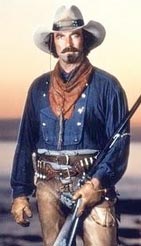 In the last couple of decades a new western hero archetype has emerged in tune with a new audience. As exemplified by actors like Tom Selleck, this new rugged western hero is vulnerable and honest; usually flawed or wounded and almost always a man of honor who is not afraid to take action. Mixing the best aspects of most of the earlier cowboy archetypes, this new western hero is still a ‘man’s man’ but has fallen in step with the new audience expectations that the hero of a western be a more valiant and brave. Gone are the anti-heroes and men with conflicted morals. These new heroes are an example for audiences to emulate far more than the more complex characters of the darker films.
In the last couple of decades a new western hero archetype has emerged in tune with a new audience. As exemplified by actors like Tom Selleck, this new rugged western hero is vulnerable and honest; usually flawed or wounded and almost always a man of honor who is not afraid to take action. Mixing the best aspects of most of the earlier cowboy archetypes, this new western hero is still a ‘man’s man’ but has fallen in step with the new audience expectations that the hero of a western be a more valiant and brave. Gone are the anti-heroes and men with conflicted morals. These new heroes are an example for audiences to emulate far more than the more complex characters of the darker films.
In some ways these new heroes reflect a desire, even if only a surface one, to reconnect with our rural past. Looking like the ‘Marlboro Men’ from the old cigarette ads, they are far more at home in the saddle than anywhere else and need the life of freedom and hardship offered in the old west to fully realize their potential as men and as human beings. The last twenty years have seen a new surge in Western style movies with actors like Kevin Costner doing films like Dances With Wolves, Silverado, Wyatt Earp and the recent Hatfield’s and McCoy’s miniseries. Costner has been outstanding in them and a great friend to the genre but the perfect example of this type of modern character is Tom Selleck. In films like Crossfire Trail, Monte Walsh and Quigley Down Under, Selleck is the perfect Western hero for a new age. Even as the battered reluctant hero of Robert Parker’s Jesse Stone films, the western hero is still very much there albeit in a modern setting.
Django Unchained and onward
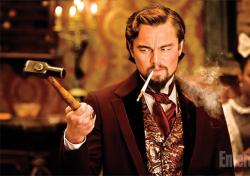 We come back then to where we first met, modern Westerns like Django Unchained and The Lone Ranger (releasing this summer), along with a very mixed bag of films from the last few years. No Westerns released in 2012 other than Django made an impact at the box office. 2011 had a moderate hit with the animated adventure Rango and a near miss with Cowboys & Aliens. 2010 was an even more uneven mix with the absolutely awful Jonah Hex and the absolutely wonderful True Grit.
We come back then to where we first met, modern Westerns like Django Unchained and The Lone Ranger (releasing this summer), along with a very mixed bag of films from the last few years. No Westerns released in 2012 other than Django made an impact at the box office. 2011 had a moderate hit with the animated adventure Rango and a near miss with Cowboys & Aliens. 2010 was an even more uneven mix with the absolutely awful Jonah Hex and the absolutely wonderful True Grit.
The variety of the Western genre is still rich though as the current crop demonstrates. We have a Spaghetti Western/homage film with a little Blaxsploitation sprinkled in, two traditional Westerns, an animated family Western, a Sci-fi Western and a supernatural Western. While only Django Unchained and True Grit were successful critically and financially there is clearly still an audience that hungers for the Western, if the sheer number of smaller Western films released in the last few years is anything to go by, but is the Western really on the comeback trail? Django Unchained has been very well received so far but I think it is too early to say. With The Lone Ranger getting some very mixed word-of-mouth and advanced press, I cannot say that I am very hopeful. I have enjoyed Westerns most of my life and want very much to see the genre thrive once again.
What do you think? Leave a comment.











Insightful post!! The more I read about John Wayne, the more I start to dislike this icon. But maybe we shouldn’t blame him, the society was in a completely different state back then and there were “less informed” individuals strutting around.
I think he was both a good person (based on the statements of people who loved AND hated him) AND a product of his time. You can definitely call him an honest, fair dealing man who believed what he said, for good or ill, and stood by every word of it. Ultimately, it is about the works in film he left behind, and they speak for themselves. That is the thing about ‘icons’ in the modern world; they are based on the most flawed of people, and are rarely representative of the real person beneath.
Something that I absolutely adore about this genre is the music. Ennio Morricone is a legend just as much as some of the well known actors from the period.
Listen: http://www.youtube.com/watch?v=pwkpfSMOyXU
We have had some classic lines from Western movies, my favourite quote is:
“When the legend becomes fact, print the legend.” – THE MAN WHO SHOT LIBERTY VALANCE
The Man Who Shot Liberty Valance is one of my most rewatched movies of all time. It is very good and my father and me used to watch it together so it has some sentimental value.
Nice article. I grew up in the late 1950s and early 60s and my first memories are of television re-runs of Ray Enwright type Westerns such as “South of St Louis” and “Return of the Badmen” so they still represent a sort of template for me. The Randolph Scott Westerns of the Boetticher years were the next landmark, and the great Robert Mitchum also made a Western worthwhile to me. Then yes I found some of the modernist (to me back then) stuff of the 60s exciting- Peckinpah more than Leone; the only Leone spaghetti I much care for is the one that doesn’t feature Clint Eastwood. Thank you!
you are very welcom
I’m not too big on western movies but Django Unchained got me interested, and this gave me some backstory. Cool, going to watch a classic now.
The Man Who Shot Liberty Valance would be a great place to start. Also the John Wayne classic Big Jake. Have fun!
There were some really amazing westerns produced in the 1950’s and the output was phenomenal! The 1960’s had its moments too with the advent of Spagettis and my personal favorite TV western series in late 50’s to mid 60’s.
You know the 60s had some classic releases but the few western we got during the 90s were pretty amazing too.
‘THE DARK KNIGHT’ is MY favorite contemporary Western 😀
Actually, there are a lot of ‘western’ elements in most comic book movies, given that westerns are like sci-fi in that they have to have broad themes to be something more audiences can identify with. Batman is very much the ‘lone gunslinger’.
As a lover of westerns, I feel obliged to add that “revisionist westerns” really began in the 1950s. See pretty much any Anthony Mann western (Winchester 73, The Far Country, The Naked Spur, The Furies) or Nicholas Ray’s Johnny Guitar if you want to experience earlier versions of “subversive” westerns.
I love those but I never felt they were all that subversive to the genre. Possibly because I watched many of those well after some of the later ones.
Very interesting article!! Hopefully The Lone Ranger can provide another hit western in the short period of time since Django. I can’t help but feel nervous about it but hopefully it will be surprisingly good and provide a western franchise for this generation.
Insightful article! I have always been very partial to the spaghetti westerns and preferred Clint Eastwood over John Wayne. I’m really enjoying the new face of the western though especially films like Django Unchained and television shows such as Deadwood.
Great article, what an interesting history the Western has! What fascinates me is how tropes of Westerns are able to span multiple genres such as games, comics, even music. It may be cliched, but I still find The Man With No Name to be the pinnacle of how the fictional cowboy should be: tough, dangerous, and brooding.
I think you guys should take a look at an old but legendary Bollywood film called Sholay, Many claim it as a “masala western” and perhaps rightly so. It had the larger then life, melodramatic flare to it like most Bollywood films. Except this was a masterpiece, it was a great example of Bollywood film making. Yet when they remade it recently it turned out awful, they had tried replace a rural setting with a urban, bandits were traded in for the gangsters… losing all the qualities that made the original so pleasant to look at.
A very interesting read, clearly the product of a good deal of research! Thanks 😀
Great article, many thanks. I’m particularly interested in your suggestion that Westerns have been in a period of flux, and fully agree with you. In fact, I’m currently working on an article on the development of Film Noir, a style which I believe has itself been in constant fluctuation for decades.
Great article, many thanks. I’m particularly interested in your suggestion that Westerns have been in a period of flux, and fully agree with you. In fact, I’m currently working on an article on the development of Film Noir, a style which I believe has itself been in constant fluctuation for decades.
Have you seen Rich Hall’s “How the West was lost.”? It’s a great look at a subject like this.
Westerns have influenced so many genres, there have been so many westerns that I think it is impossible not to see elements of a western is some films.
Whatever a film did, the western did it first and probably better.
Very well-written article about something that is a lot more difficult to discuss that it would seem: genre. To me, Westerns that complicate the genre like Johnny Guitar, McCabe and Mrs. Miller, Dead Man, Meek’s Cutoff and Brokeback Mountain are always more interesting than Westerns like My Darling Clementine, perhaps because they subvert the myth of the hero.
Loved this. I grew up with an obsession of Clint Eastwood and his subsequent westerns and since then have never found a contemporary western to do justice to the feelings of excitement and awe I experienced when I was much younger. I definitely agree its a genre in flux, though I thought Brokeback mountain and True Grit were spectacular, and like you, I really hope it breaks through to be as brilliant as I recall it was.
Great article! I still believe there is a place for westerns (despite the fact they don’t make a lot of money). 21st century culture’s fascination with the ‘hero’ is carried over to this under-appreciated genre. John Wayne, Gary Cooper, Steve McQueen were all-american saviours. In this time, actors like Jeff Bridges, Christian Bale, and Russell Crowe bring levity and heart to the cowboy archetype.
I am looking for confirmation that the Marlboro Ads used the song ‘Blood on the Saddle’ in them. Maybe it was a TV show though…where was it used. Can anyone help?
McClintock! seemed to have a very sympathetic portrayal of natives in Westerns. On a broader note, it seems to me that Westerns in the United States in the 1950s were used to express a greater yearning for a simpler, calmer life after major societal shifts over the past thirty to forty years and an escape from the memory of the two World Wars.